The Annealed MAP algorithm (Yuan et al., 2004) solves the problem of finding the most likely configuration of values of a set of nodes given observations of another subset of nodes. This problem is often called Maximum A-posteriori Probability (MAP). The Annealed MAP algorithm is approximate and solves the problem by means of an approximate optimization procedure called simulated annealing. While the solution is approximate, it performs well in practice and it gives an idea of the order of magnitude of the true maximum. The Annealed MAP algorithm drastically extends the class of MAP problems that can be solved.
To invoke the algorithm dialog, select Annealed MAP from the Network Menu
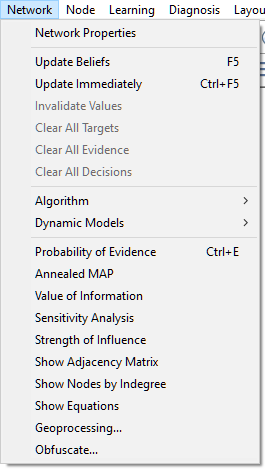
Annealed MAP dialog
The Annealed MAP dialog that appears shows three window panes and several user-settable parameters.
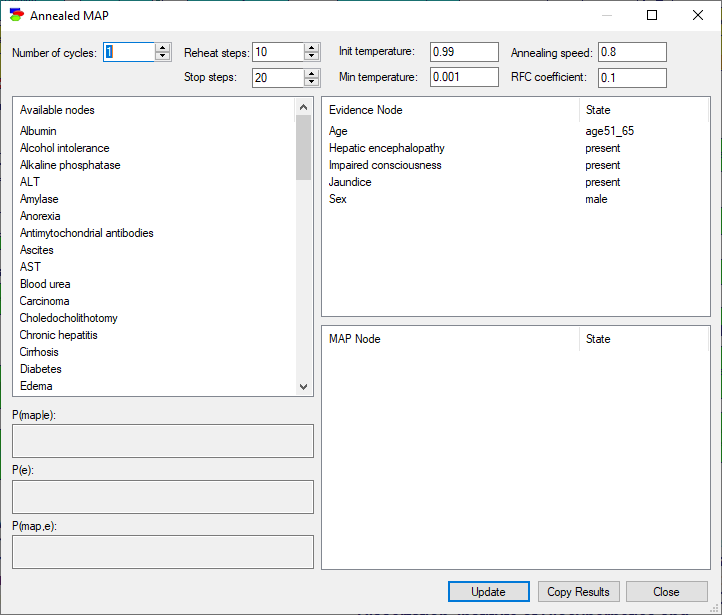
The upper-left window pane contains Available nodes, which are all nodes in the current network that have not been observed.
The upper-right window pane contains Evidence Nodes and their States. In this case, we have five observed evidence nodes.
The lower-right window is meant to list the nodes in the MAP set (MAP Nodes) and will be filled by the algorithm with their States.
Nodes in the Available nodes set can be observed or added to the MAP set. To add a node to the MAP set, right-click on a node name and select Add node to MAP from the pop-up menu.
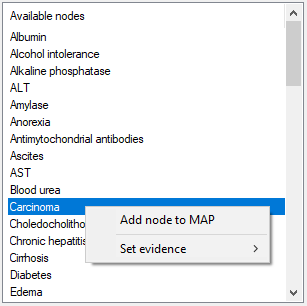
To add a node to the evidence set, right-click on a node name, select Set evidence, and then the observed state from the pop-up menu.
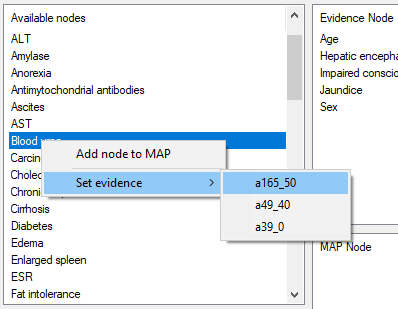
To move a node back from the MAP Node set or to move it to the evidence set, right-click on the node name and make an appropriate selection from the pop-up menu.

The same can be done to nodes in the Evidence Node set:
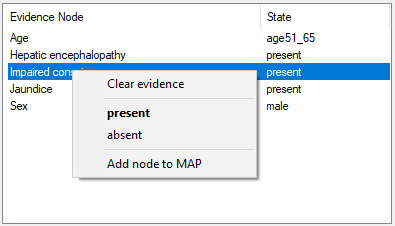
Nodes can be moved between windows in groups as well - just select multiple nodes before right-clicking:
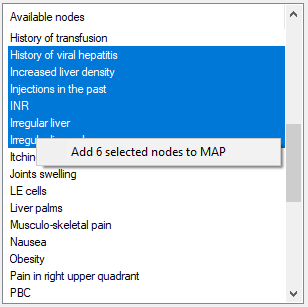
Parameters
Annealed MAP algorithm has seven parameters:
•Number of cycles (default 1)
•Reheat steps (default 10)
•Stop steps (default 20)
•Init temperature (default 0.99)
•Min temperature (default 0.001)
•Annealing speed (default 0.8), and
•RFC coefficient (default 0.1)
These parameters can be fine tuned to obtain better results. More information about the meaning of these parameters can be found in (Yuan et al., 2004).
Algorithm execution and results
Pressing the Update button starts the Annealed MAP algorithm, which finds the maximum a posteriori probability assignment of states to the MAP Node set and calculates the following three probabilities:
•P(MAP|E): The probability of the MAP assignment given the set of evidence
•P(E): The probability of evidence
•P(MAP,E): The joint probability of MAP assignment and the evidence
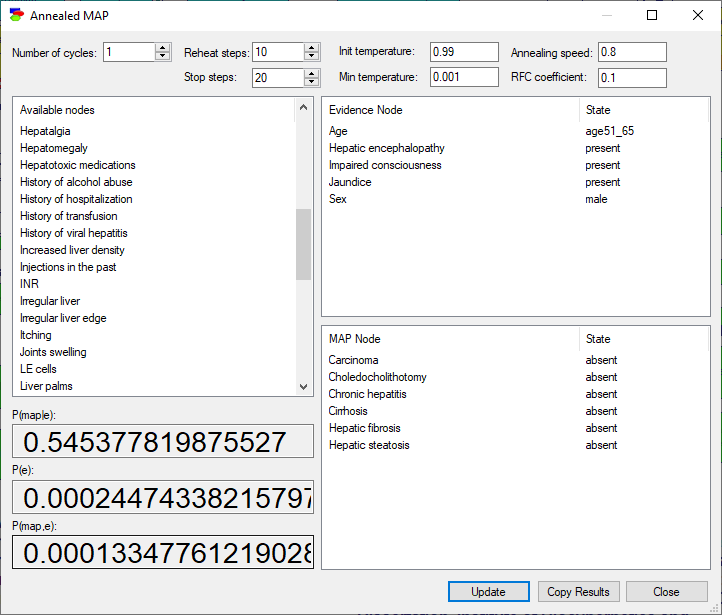
We can read from the results that the most likely combination of states of the six diseases chosen for the MAP Node set is that they are all absent. The probability of this combination of states is roughly P(MAP|E)=0.5454.
Pressing Copy Results copies the most important results to the clipboard. The results can be pasted into a different program. The paste operation in the above example gives the following result:
P(map|e)=0.545377819875527
P(e)=0.000244743382157977
P(map,e)=0.000133477612190281
MAP nodes:
Carcinoma absent
Choledocholithotomy absent
Chronic hepatitis absent
Cirrhosis absent
Hepatic fibrosis absent
Hepatic steatosis absent
Evidence nodes:
Age age51_65
Hepatic encephalopathy present
Impaired consciousness present
Jaundice present
Sex male
Please remember to press the Update button whenever you have changed any of the Annealed MAP algorithm parameters, performed any new observations, or moved any nodes between the Available nodes and MAP Nodes windows.
Pressing Close closes the Anneal MAP dialog.